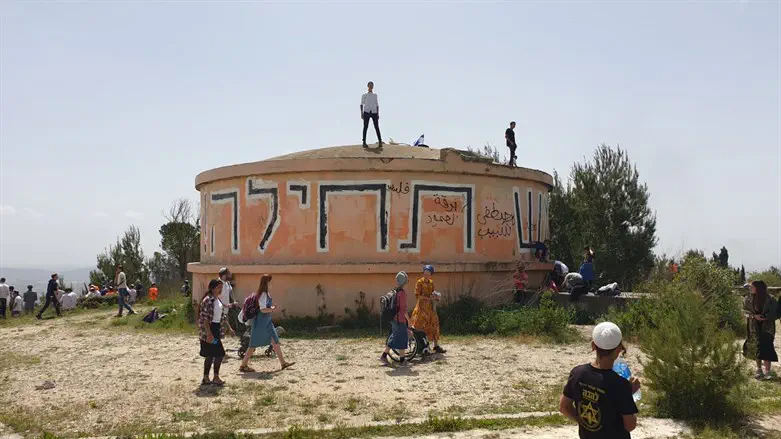
In an interview with Israel's Kan MoreshetRadio in Hebrew, Member of Knesset Orit Strock (Religious Zionism Party) expresses the fear that the Israeli Supreme Court will give the order to demolish the yeshiva (Torah study hall) at Homesh during the interim period before the elections. In the attempt to prevent that, she sent a letter to Supreme Court Chief Justice Esther Hayut demanding that she refrain from issuing an eviction order for Homash while Israel is being led by a caretaker government only. The letter was also signed by dozens of MKs, including four faction leaders.
Strock discusses her intention to continue to promote the bill that would cancel the Disengagement Law (2005) that ordered the evacuation of four Jewish communities in Area C in the Jenin region of northern Samaria at the same time as all Jewish communities were removed from Gaza. The bill was in process already under the last Netanyahu government and passed the preliminary reading with a large majority, with 70 MKs in favor. According to Strock, “the law got stuck only because a horrible government was set up with Ra’am (the United Arab List) and the left wing. We intend to promote it again after the elections.”
Jeremy Saltan, Zionist Spirit Knesset party Director, noted to Israel National News - Arutz Sheva that, “Bibi [Netanyahu] had 12 years as prime minister after voting for the Disengagement to correct his error and never did.”
MK Miki Zohar (Likud) tabled the bill as a private member’s bill during Netanyahu’s last few days in office. It was never a government bill. After having passed the preliminary reading, it spent the entire year of the Bennett-Lapid government stuck in committee, a committee the Likud was boycotting by never attending.”
Homesh is a community in northern Samaria that is at the center of much controversy. In 2005, it was demolished along with three other nearby settlements under an arrangement devised by then-Prime Minister Ariel Sharon with the hope that this would promote peace. Despite the dismantling of the settlement, the IDF held onto the land and set up a base there. While this region is surrounded by Arab towns in Area B, it remains in Area C, under Israeli jurisdiction.
In 2009, after repeated attempts to re-establish the community were consistently foiled, a yeshiva was set up on the site in order to maintain a Jewish presence in this historic region. The yeshiva has also been periodically destroyed, but students and their rabbis return. Strock notes that, over the past year, a growing proportion of the Israeli populace is expressing its support by coming to marches and on solidarity visits.
In a Facebook post, Strock noted how Jews returned to Homesh “almost immediately after the Disengagement. I was privileged to be among the initiators of the idea of "Homesh First", the main point of which is correcting the sin of Disengagement. We will start in northern Samaria . . . and from there we will move forward.”
“I was privileged to be among the marchers in the mass march on Independence Day 14 years ago.
“In the last year, I had the privilege of being a partner in the huge public awakening around Homesh - a public awakening that put an end to the feeling that the students of yeshiva are the only ones demanding the return to our land. Aside from the uplifting mass marches, the demonstrations, and the struggle on the ground against the checkpoints and evacuations, I repeatedly initiated extensive parliamentary activity that placed Homesh at the center of the Knesset's attention.”
Strock concludes her radio interview by saying, “Everyone understands that the Disengagement, including from Gaza, was a national crime.”